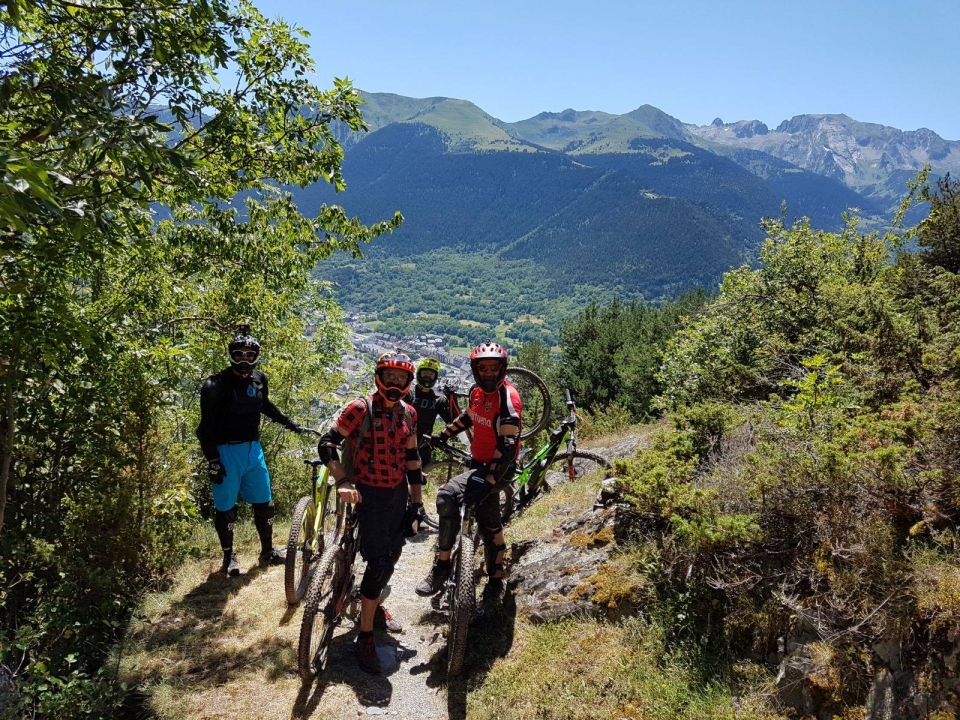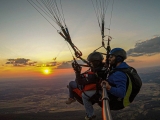
Exercise is good. Always. Remember that and don't focus on potential accidents or occasional ailments it may cause because if you do it properly, practising it consistently and healthily, it can only bring you health benefits and good habits. Even more so if you enjoy a particular sport and take pleasure in doing it.
The same applies to cycling. Continuous rides or long hours pedalling your bike can lead to problems in your limbs, especially in the knees, which are one of the most worked areas when practising MTB or road cycling. Hence, one of the most common conditions affecting cyclists is Chondromalacia Patellae or Patellofemoral Pain Syndrome.
Chondromalacia is possibly the condition that most affects cyclists' knees. It's a pathology related to the repetition of a cyclical movement that causes wear to the cartilage area on the back of the kneecap as it rubs against the femoral condyle (the end of the femur).
The kneecap is that small triangular bone located just above the knee. At its top, the rectus femoris muscle inserts (one of the four parts of the quadriceps, the thigh muscle). At its bottom, it connects to the tibia via the patellar ligament.
The causes of this cartilage degeneration or wear can vary greatly. Besides pain in the front of the knee, the most common symptoms of Patellofemoral Pain Syndrome are pain when going downhill or downstairs, as well as stiffness and difficulty extending the knee after keeping it bent for a while (like during a car journey or watching a film at the cinema).
It's most advisable for an orthopaedic specialist to determine the severity of the Patellofemoral Pain Syndrome through an MRI scan, as it can be more or less advanced. It's important, or at least highly recommended, that the medical specialist has some experience with cyclists or athletes in general, as otherwise their first recommendation might simply be to tell you to stop cycling or diagnose it as a "simple" sprain.

If the Chondromalacia isn't too advanced, there are several treatments or methods to reduce this friction and consequently slow down the wear and eliminate discomfort:
- Raise the saddle. By doing this, we'll bend the knee less and therefore put less pressure on the kneecap. Raise it as much as possible without your hips "rocking" with each pedal stroke.
- Increase your cadence: another way to reduce the load on the kneecap. To do this, get used to changing gears just before starting climbs.
- Check that the saddle isn't too far forward, as this also increases knee flexion.
- Using pedals with limited float helps reduce lateral deviations of the knee while pedalling, which may be increasing the pressure of the femoral condyles on the kneecap.
- Through a biomechanical analysis of your pedalling, we can improve foot placement on the pedal, making relevant modifications to help reduce pressure on the kneecap.
- Increasing the distance between the crank arm and pedal might help, as a possible cause could be having wider-than-normal hip spacing. This would cause the tibia to be misaligned with the femur, creating additional pressure on the kneecap.
- In daily life, avoid keeping the knee bent for long periods. If you work seated, try to stand up occasionally and find positions where your knees are straight.

Performing a series of exercises to strengthen the quadriceps will help better support the kneecap and reduce cartilage wear. To improve this knee condition without giving up cycling, we recommend these exercises:
- Standing with legs straight, simply contract your quadriceps hard as if pushing towards the ground and hold the contraction for 10 seconds. Rest for 10 seconds and contract again. Do 10 repetitions.
- Leaning your back against a wall, bend your knees about 45 degrees, hold a ball between your knees. 8 repetitions of 20 seconds, resting 20 seconds between repetitions.
- Sitting on a chair, extend one leg and keep it horizontal. After five days, add some ankle weight. 8 repetitions of 20 seconds, resting 20 seconds between repetitions.
- On the quadriceps extension machine, do only the last 10 degrees of movement and hold the muscle contraction for 5 seconds with the knee extended.
- Sitting on the floor with your back against the wall and legs extended. Place a rolled towel under your knees. Contract your quadriceps, straighten the knee and lift your ankle off the ground. Start with 15 repetitions and gradually increase.
- Hamstring stretches (sitting, one leg bent with knee outward, reach for the foot of the straight leg) and quadriceps stretches (standing, bend one leg holding the ankle with your hand).

Always using your own mountain bike also helps strengthen the quadriceps and therefore better support the kneecap, avoiding friction with the femur. All this to prevent that pesky and annoying Patellofemoral Pain Syndrome.
But as we said at the beginning, if you enjoy a sport, don't give it up unless a specialist expressly tells you otherwise. If in your case it's cycling, even better because throughout the country you'll find the best opportunities to ride your bike, whether on an MTB route or by renting a bicycle that best suits the trail you want to conquer with your pedal power.











